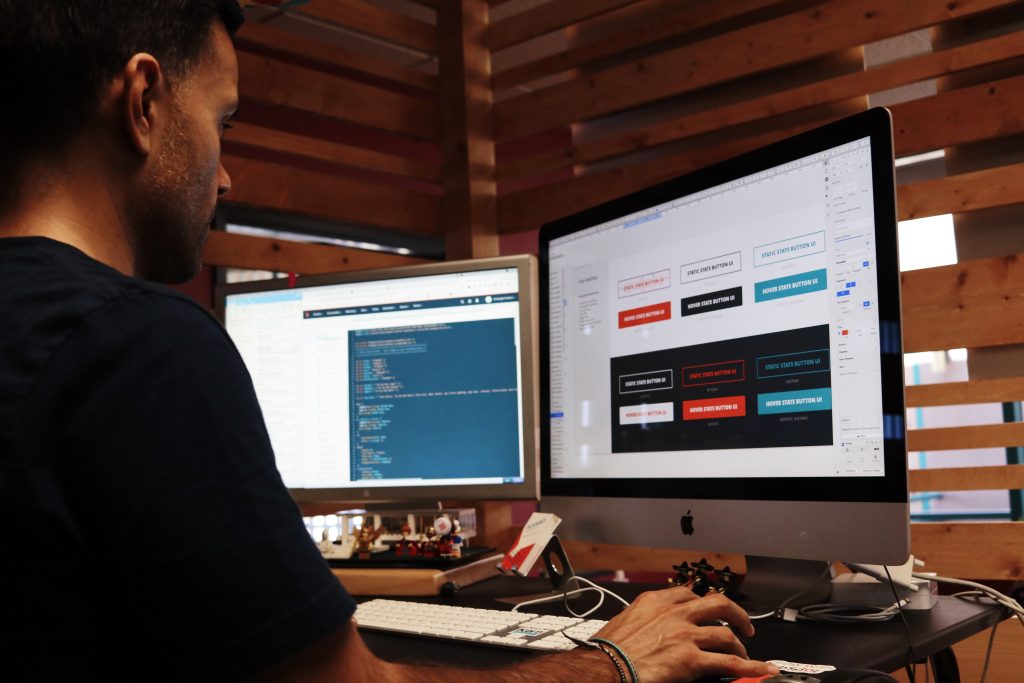In the ever-evolving realm of web design, college students face the challenge of keeping up with the latest tools and resources. Whether you’re a budding web designer or a student in related fields, having the right tools can drastically streamline your learning and project development. This article highlights key web design tools and resources essential for college students, focusing on usability, accessibility, and efficiency.

Image Source Link: https://unsplash.com/photos/man-using-apple-computer-iEiUITs149M
1. Adobe Creative Suite: The Designer’s Toolbox
At the heart of web design lies the need for powerful graphic design tools, and Adobe Creative Suite stands as an undisputed leader. Adobe offers an array of applications like Photoshop for image editing, Illustrator for vector graphics, and XD for user interface and experience design, including creative ways to write the date in your projects. Adobe is a must-have for students because of its wide range of functionalities and the vast array of tutorials and resources available. Students can benefit from educational discounts, making this suite an affordable powerhouse. Moreover, the skills you acquire while mastering Adobe applications are highly valued in the web design industry, preparing you for a professional career.
2. WordPress: More Than Just Blogging
Gone are the days when WordPress was merely a blogging platform. Today, it’s a comprehensive tool for creating full-fledged websites. Its user-friendly interface makes it ideal for beginners, while its extensive plugin ecosystem allows endless customization and functionality enhancement. As a student, learning WordPress is beneficial for several reasons. Firstly, it’s free and open-source, which is great for those on a budget. Secondly, the skills learned through WordPress are in high demand, as many businesses prefer it for their websites. Finally, the large community behind WordPress means you’ll never be short of tutorials, guides, and forums to help you navigate your web design journey.
3. Code Editors: Writing the Web
A robust code editor is necessary for those delving into the more technical side of web design. Sublime Text and Visual Studio Code are two popular choices among students. Sublime Text is known for its speed and efficiency, perfect for quick edits and large projects. Visual Studio Code, on the other hand, offers extensive plugin support and integration with Git, which is invaluable for version control and collaboration. Both editors are free and support a variety of programming languages, making them versatile tools in your web design toolkit. Learning to use these editors effectively will streamline your workflow and deepen your understanding of the nuts and bolts of web design.
4. Responsive Design Tools: Crafting for Every Screen
Responsive design becomes crucial in an era where browsing is no longer confined to desktop computers. Tools like Bootstrap and Flexbox are game-changers, simplifying the process of creating websites that look great on any device. Bootstrap offers a framework with pre-designed components, perfect for students who want to build responsive sites quickly. Flexbox, meanwhile, is a CSS layout module that provides more flexibility and control. Both tools are essential for understanding how modern web design adapts to various screen sizes and devices. Plus, they’re both free, making them accessible for students on a budget.
5. Learning Resources: Knowledge at Your Fingertips
Finally, a list of resources would only be complete mentioning learning platforms. Websites like Coursera, Udemy, and Khan Academy offer many web design courses, ranging from beginner to advanced. These platforms often provide courses developed by industry experts and universities, ensuring high-quality and up-to-date content. For students, this is an invaluable resource for learning new skills and honing existing ones. Furthermore, many of these courses offer certifications upon completion, adding value to your portfolio and resume.
Conclusion
For college students venturing into the world of web design, these tools and resources are not just helpful but essential. They offer a blend of design, technical prowess, and learning opportunities that can set the foundation for a successful career in web design. Remember, the field of web design is dynamic, so continually exploring and learning about new tools and trends is key to staying relevant and effective. Happy designing!


